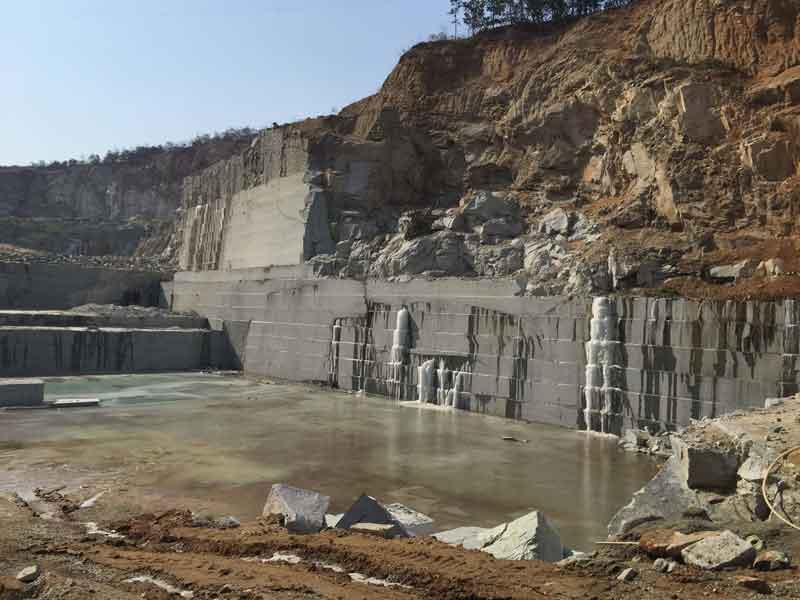Revealing the Mysteries of Granite Quarrying: Where Strength and Sophistication Meet
The globe of granite quarrying is a realm where the raw stamina of nature merges with human creativity to produce frameworks that stand the test of time with an air of elegance. From the midsts of quarries to the precise sprucing up in workshops, the procedure of transforming granite right into building wonders is a complicated dancing of tradition and technology. As we peer into the midsts of this ancient craft, we begin to uncover the covert intricacies that form the really essence of our constructed setting.
The Beginnings of Granite Quarrying
In the annals of building background, the origins of granite quarrying are shrouded in a tapestry of old workmanship and geological wonders. Going back to old Egypt and Mesopotamia, the removal of granite from quarries marked the start of a journey that would eventually cause the creation of several of the globe's most famous frameworks.
Granite quarrying's roots can be mapped to the competent artisans who identified the stone's durability and aesthetic charm. Through a combination of primitive devices and sheer decision, these early quarry employees discovered granite blocks that would become the foundation of civilizations.
As civilizations advanced, so did the methods of quarrying granite. The Romans, renowned for their design expertise, established innovative techniques for removing granite to build monuments, holy places, and roads that stood the examination of time.
The heritage of these old quarrying techniques proceeds to form modern-day architecture, with granite remaining an icon of stamina and sophistication in building and construction jobs around the world. (granite quarries in south africa)
Tools of the Quarrying Profession
The advancement of granite quarrying techniques from ancient civilizations to modern-day times highlights the crucial duty played by the devices of the quarrying trade in shaping the industry's methods. In ancient times, quarrying tools were simple, usually including blades, hammers, and wedges made from products like bronze or iron. These devices called for considerable manpower and time to remove granite blocks from quarries.

Furthermore, the introduction of pneumatic tools and high-powered machinery has actually significantly decreased the physical labor required in quarrying procedures, improving worker security and productivity. As the quarrying industry continues to introduce, the devices of the trade continue to be at the leading edge of driving progression and shaping the future of granite extraction.
Drawing Out Blocks of Granite
Utilizing accuracy machinery and advanced strategies, Learn More Here the removal of granite blocks from quarries has actually come to be an advanced process in the modern-day quarrying sector. The preliminary action involves determining the area and size of the granite down payment to identify one of the most efficient extraction approach. Once an ideal site is chosen, the removal process starts with the boring of openings for the positioning of nitroglycerins. Regulated blasting techniques are then utilized to disintegrate the granite right into convenient sections.

Sprucing Up and Completing Methods
To attain a remarkable surface area on granite blocks, knowledgeable artisans use a series of precise polishing and ending up techniques. After the preliminary removal and forming procedures, the granite obstructs undertake a thorough sprucing up phase to boost their natural beauty and longevity.
In enhancement to polishing, finishing techniques are used to further fine-tune the granite's appearance. These techniques may consist of flaming, developing, or brushing, each offering distinct structures and surfaces to fit different aesthetic preferences. Flaming, for circumstances, includes subjecting the granite surface to heats to create a rough, distinctive coating, suitable for exterior applications where slip-resistance is crucial. Developing, on the other hand, provides a matte coating that is smooth to the touch, excellent for interior counter tops and floor covering. By meticulously picking and using these polishing and finishing techniques, artisans can change raw granite obstructs into beautiful items that display both stamina and sophistication.

Ecological Impact and Sustainability
With the expanding emphasis on environmental awareness in the industry, granite quarrying methods are increasingly inspected for their impact on natural deposits and long-term sustainability. Quarrying for granite can have considerable ecological implications. The extraction procedure often includes using heavy machinery, nitroglycerins, and large amounts of water, causing environment destruction, soil disintegration, and water air pollution. Additionally, the transportation of granite from quarries to refining centers creates carbon emissions, additionally adding to ecological degradation. granite quarries in south africa.
To alleviate these influences and make certain sustainability in granite quarrying, industry stakeholders imp source are adopting various measures. Executing advanced technologies to decrease energy consumption and water usage, reclaiming quarried land for ecological restoration, and promoting responsible sourcing techniques are some approaches being used. In addition, qualifications such as the Woodland Stewardship Council (FSC) and the Leadership in Energy and Environmental Design (LEED) help customers recognize eco-friendly granite products.
Final Thought
In conclusion, granite quarrying is a procedure that requires specialized devices and methods to remove blocks of granite and polish them to a high degree of surface. While the ecological effect of quarrying can be significant, initiatives are being made to improve sustainability methods in the industry. Generally, granite quarrying is a delicate equilibrium between taking advantage of the strength and sophistication of this natural rock while minimizing its influence on the environment.
Comments on “The Concealed Treasures: Checking Out Granite Quarries in South Africa”